
Nutrition for exercise, particularly post exercise nutrition, plays an important role in recovery and performance. Individual nutritional needs vary according to body weight and composition, energy needs, the type, duration and intensity of the exercise, body composition goals, pre-exercise nutrition, among other factors.
Generally speaking however, after a moderate/ intense workout it is important to replenish glycogen which the muscles have used, by consuming carbohydrates. After carbohydrate consumption and metabolism, the glucose is stored in the muscles as glycogen, ready to be used when needed. It is also important to provide protein for the repair of muscle tissue. Post exercise nutrition should provide enough protein so that protein synthesis (building) is greater than protein breakdown. This aids recovery and enables the muscles to build, adapt and strengthen.
Some believe that there is a "window of opportunity" immediately after exercise, in which the rates of glycogen and protein synthesis are maximised for approximately 2 hours. This is a grey area within research, with many factors affecting the criticalness of immediate (within 2 hours) post-exercise nutrition, including the composition of pre-exercise nutrition, the type of exercise, and the recovery time between sessions. However, the rates of protein and glycogen synthesis are known to increase above the resting rates following exercise, an effect which is thought to last for at least 24 hours. Therefore, post exercise nutrition is an important factor in performance and recovery.
Many people chose to consume a post-workout drink or shake, providing rapidly digestible protein and carbohydrates to replenish their energy and boost recovery. Indeed, this can be useful for some individuals, particularly where time, practicality and availability of food, low post-exercise appetite, and high energy requirements are factors for consideration. However, it is recommended that real food options which allow the achievement of recovery goals (replenishing carbohydrates and protein) are favoured over sports food supplements. This avoids the possible "doubling up" of recovery nutrition by consuming a sports food supplement after training, as well as then following up soon afterwards with a meal which would help meet the same recovery goals. This is particularly important when considering individual energy needs (calories needed) for optimal body composition e.g. when trying to avoid the over-consumption of calories, or indeed when trying to create a calorie deficit to achieve body fat loss.
So......
That's the informative bit of this article done, lets move on to the food! The purpose of the list below is to give you some new food combination ideas. If you're used to thinking about post-exercise nutrition, then you're probably well accustomed to munching on foods like chicken, rice, and Greek yoghurt. If you fancy mixing things up a bit, here are a few food combinations you may not have tried....
1. Cottage Cheese with Blueberries
Cottage cheese is a high protein, low fat and low sugar food, so it is great for post exercise. Most brands of cottage cheese contain around 9-10g of protein per 100g. It contains a slow digesting protein, so is particularly good for settling those bedtime munchies. Some brands contain more salt than others, so compare the labels and look for the brand with the least salt. Flavoured varieties also tend to contain more sugar, so stick to plain cottage cheese and add nutritious flavourings yourself e.g. chopped chives.
Blueberries can provide the simple carbohydrates to help restore glycogen levels, as well as immune boosting anti-oxidants to aid recovery after exercise.
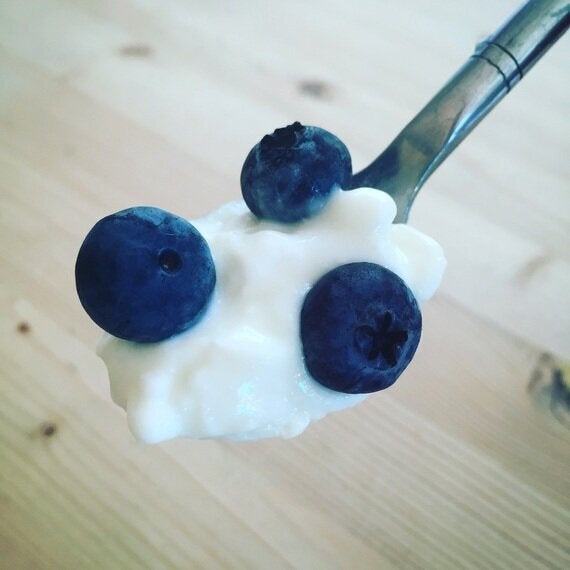
2. Ostrich Steak with Honey Mustard Dressing, Avocado, and Watercress
Ostrich meat is a red meat, similar to beef. It is naturally low in fat and high in protein, and is tender in texture. This exotic meat is now sold in supermarkets, I found a pack of 2 fillet steaks in Tesco for £5. A 125g portion (1 fillet steak) contains 141ckal, only 2.6g of fat, and 28g of protein.
See my Honey Mustard Dressing post for the dressing recipe, in which the honey provides simple carbohydrates, as well as vitamins and minerals for recovery.
Watercress is packed full of antioxidant vitamins. The addition of avocado to the meal provides a dose of healthy fats, which increase the absorption of vitamins from the watercress, great news!

3. Quark and Peanut Butter on Apple Slices
Quark is a soft spoonable cheese (it doesn't taste like cheese), which is naturally very low in fat and is a good source of protein. Peanut butter also contains protein, as well as healthy fats. Apples provide a healthy source of nutrient dense simple carbohydrate; great for after your workout.
Mix 4 tablespoons of quark with 1 tablespoon of peanut butter and an optional half teaspoon of vanilla. Spread the mixture onto sliced apple, and add chopped nuts as a topping if you want an extra nutrient boost.
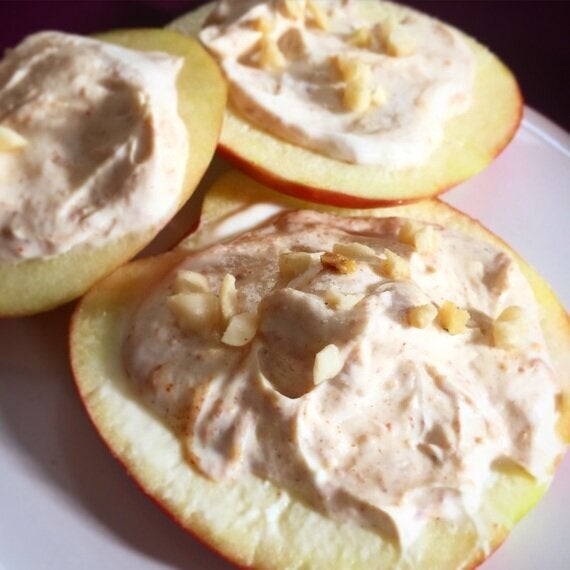
4. Sweet Potato with Peanut Butter and Chicken
Ok so eating sweet potato and chicken after exercise probably isn't unfamiliar territory, however, what about adding peanut butter to the mix?!
Sweet potato is a great food for replenishing energy stores, and is particularly high in vitamin A which boosts recovery. By adding peanut butter, the potential to reap the recovery benefits of the vitamin A is increased due to the healthy fat contained in the peanut butter which increases the absorption.
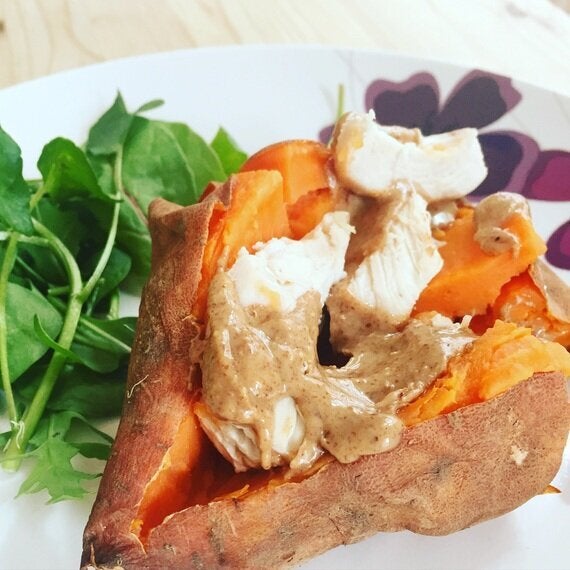
5. Savoury Oats
This is a great one for if you train in the morning, refueling the muscles after your workout, as well as providing slowly released energy to keep you going until lunch. This savoury version of your usual porridge also provides protein from your chosen source; bacon, egg, or both! You can add green veggies such as spinach or grated courgette to really ramp up the nutrient content. Chives and bacon savoury oats is a favourite of mine, as well as spinach, spring onion and poached egg.
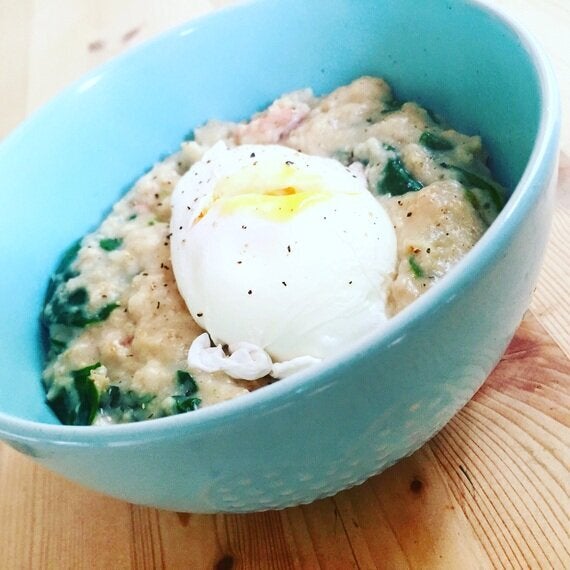
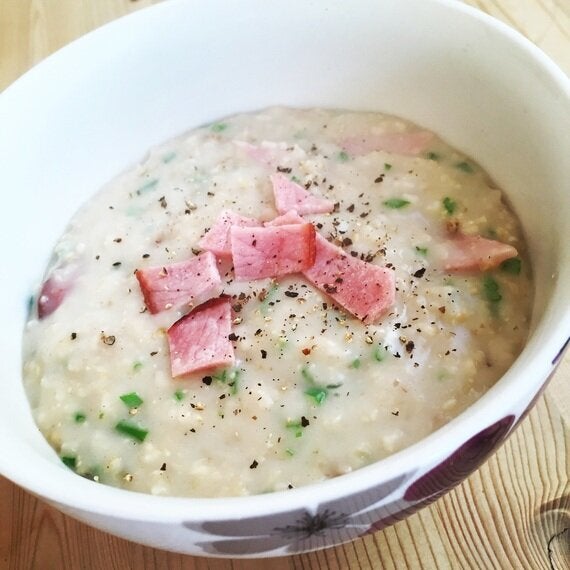
Give them a try and let me know what you think via the Clean Food Queen Facebook page!
This article was originally published at http://cleanfoodqueen.co.uk/2015/10/14/nutrition-for-exercise-5-food-combinations-you-need-to-try/